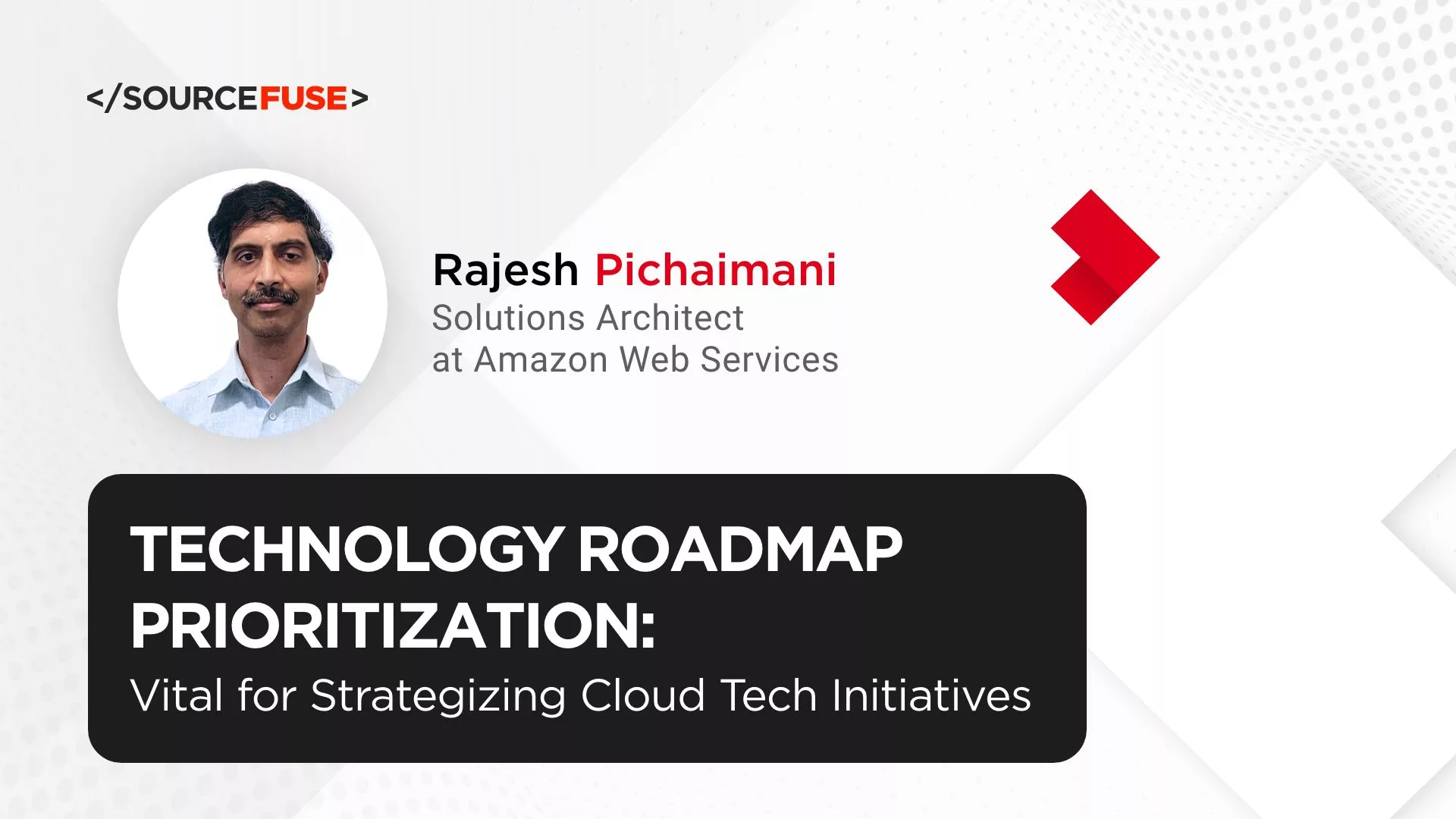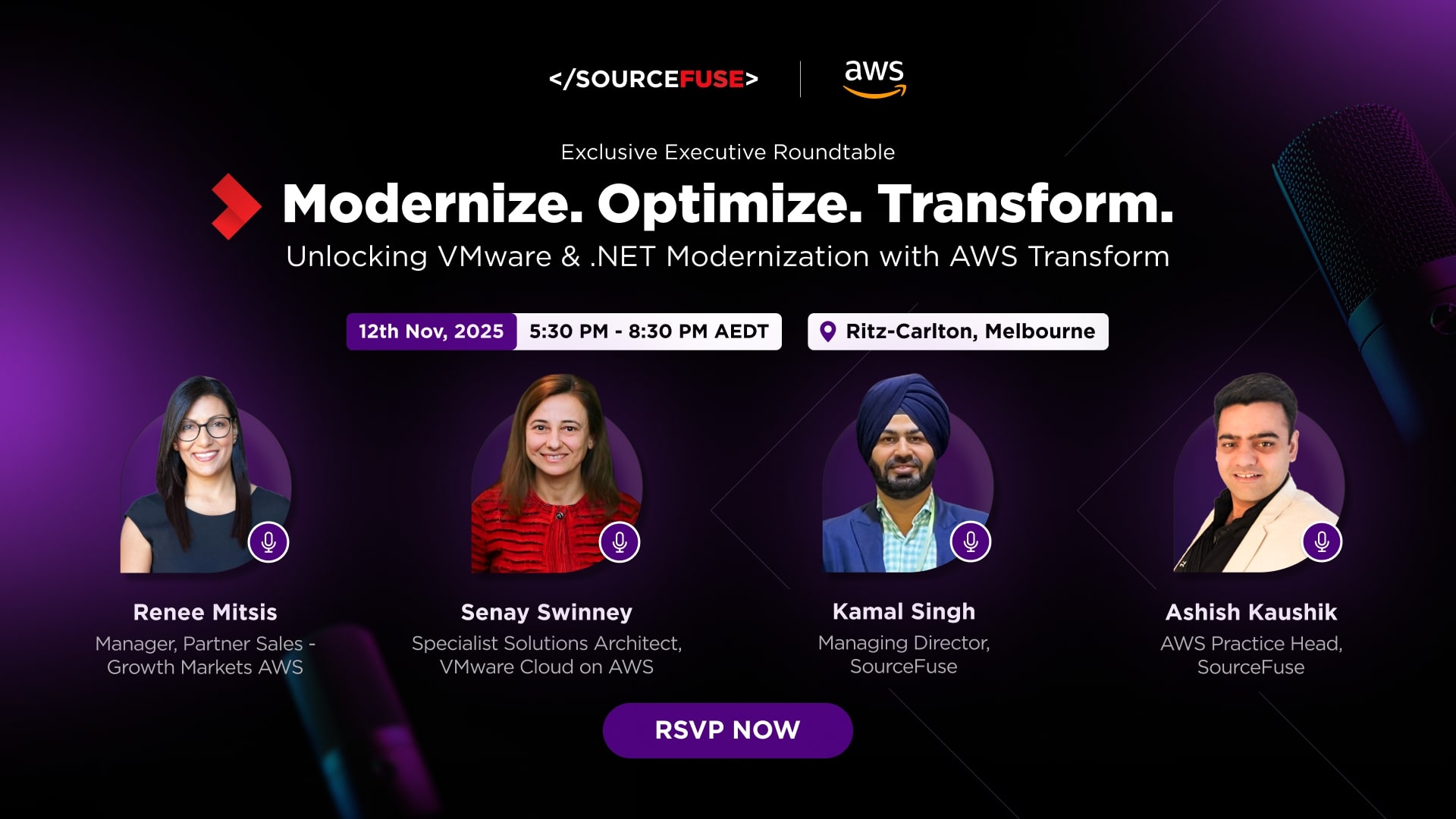Embarking on the journey to the cloud can be both exciting and challenging. Whether you’re contemplating the initial steps or find yourself navigating the complexities of securing stakeholders’ approvals, technology roadmap prioritization could be the answer. Commonly referred to as TRP, it is a transformative force in the domain of cloud adoption, transforming your cloud aspirations into a tangible success story.
To tell us more, we spoke to Rajesh Pichaimani, Solutions Architect at AWS, in our recent “Talking Out Cloud” interview. Together we delved into the nuanced layers of TRP, dissecting its multifaceted role in the delicate balance between short-term and long-term business goals. Beyond the surface, Rajesh unravels how TRP serves as the linchpin in fast-tracking organizational initiatives on the cloud journey, offering insights and methodologies to navigate challenges seamlessly.

#1 How do you define TRP, and what is its crucial significance for leading tech companies?
At the heart of creating this technology roadmap is where we engage with our customers to gain insights into their myriad initiatives. It spans both the short-term and the long-term business goals, over a horizon of two to three years.
Our efforts extend beyond just the IT team. We endeavor to connect with all relevant stakeholders, including executives from sales, marketing, finance, engineering, and more. We approach this with a “working backward” methodology, seeking to understand the intricacies of these initiatives, including timelines, criticality, the necessary involvement of various teams, and budget considerations.
The culmination of this effort results in these initiatives being placed on a visual 3×3 grid. This grid serves as a shared reference point, enabling both the customer and the AWS team to clearly see where each initiative lands on the tech roadmap. With a comprehensive understanding of these objectives in hand, we collaboratively work to assemble the right AWS resources, drawing from both internal and external expertise.
You might wonder why we go through such a comprehensive journey! It’s about helping our customers achieve their goals and accelerate their time to market. We provide information on AWS product usage and pricing, combining insights from both our consulting partners and the marketplace, all aimed at helping our customers make cost-effective decisions.
At the end of TRP exercise, our customers receive a prioritized list of initiatives and a visual representation of their placement, aligning with the perspectives and needs of all stakeholders within their organization.
#2 What common challenges do organizations encounter in prioritizing technology roadmaps, and how can they surmount them?
One common challenge we often encounter is unspoken disagreements among different stakeholders within the organization. Unfortunately, this often leads to digital transformation initiatives never progressing beyond the proof of concept stage.
That’s where the TRP proves its value. In just 60 minutes, this activity with key stakeholders enables them to reach a consensus that aligns with the company’s overarching vision.
Another common challenge we’ve observed is budget-related. It’s not just about the allocation of funds, but also about visibility. Many customers use this meeting as an opportunity for candid, open conversations about the concerns surrounding their various initiatives, looking at them from an organizational perspective. This broader view allows them to identify roadblocks at an early stage.
Consequently, when projects kick off, everyone is aligned from top to bottom. This alignment helps them stay focused and avoid distractions throughout the journey.
#3 After meeting with customers to talk about the TRP activity, what is the next step?
The question that we often hear from our customers is “What’s in it for me?” as they’re looking for the full picture. So, after our TRP exercise with the customer, we dive into the details, analyzing each initiative thoroughly. This involves identifying the key AWS services associated with each initiative and crafting example scenarios based on their usage.
In about a week’s time, we present these findings to the customer, seeking validation and making refinements as necessary. This artifact becomes a valuable resource for our customers, something they can share with their leadership and the other stakeholders who were a part of the exercise.
From this point forward, the process transitions into the implementation phase, with the respective owners within the organization taking the reins. It’s about turning the plan into action and making those initiatives a reality.
#4 What best practices or frameworks for prioritizing technology initiatives can assist companies in making informed decisions?
During the TRP session, we take a deep dive into each initiative, assessing them from three key dimensions: strategic impact, cost complexity, and organizational importance. Let’s break it down:
- Strategic Impact: This dimension focuses on how each initiative is expected to contribute directly to the company’s top line or bottom line. Some initiatives may have customer-facing components that generate revenue, while others might improve productivity, thereby enhancing profitability margins.
- Cost Complexity: Here, we categorize initiatives on a spectrum from low to high complexity. Some initiatives are in their infancy, requiring teams to be built and infrastructure to be established before development can commence. On the other end of the spectrum, some initiatives are well into their development stages but need testing and launching. These two extremes cover the entire cost complexity scale.
- Organizational Importance: This dimension involves evaluating how well each initiative aligns with the overall goals of the organization. It’s about understanding the strategic relevance of the initiative within the broader context.
In addition to these dimensions, we also delve into the current state of the technology stack, the challenges currently faced, including issues with technology and processes, and how they are currently being addressed. This information becomes invaluable as we progress further in our discussions and work towards solutions that will enable these initiatives to thrive.
Get in touch with SourceFuse and learn more about TRP best practices to get started.
#5 How do you balance short-term objectives and long-term vision when prioritizing technology roadmap strategies?
Our key recommendation is to break down your strategic initiatives into smaller, achievable deliverables that can be tackled in sprints. These smaller initiatives should run in parallel with your short-term objectives.
For instance, if a long-term goal involves launching a revamped architecture for a fast offering, there may be several interdependent components related to technology, processes, and more. By breaking these down into manageable chunks and aligning them with multiple sprints, you can keep your long-term initiatives on track while also making progress on short-term goals. Think of it as bite-sized activities, akin to SMART goals, which I’m sure many are familiar with.
#6 How can customers benefit from the combined support of AWS and its Advanced Consulting Partners, like SourceFuse?
Conducting the TRP exercise at the initial stages of our discussions with the SourceFuse Solution Architects team brings numerous benefits to our customers.
It grants them access to a wealth of resources, including technology enablement programs, specialized expertise, and assistance in identifying the right funding programs, among many other advantages. This ensures that all stakeholders involved have consistent, identical information right from the outset, contributing significantly to the success of our customers in their digital transformation journey.
